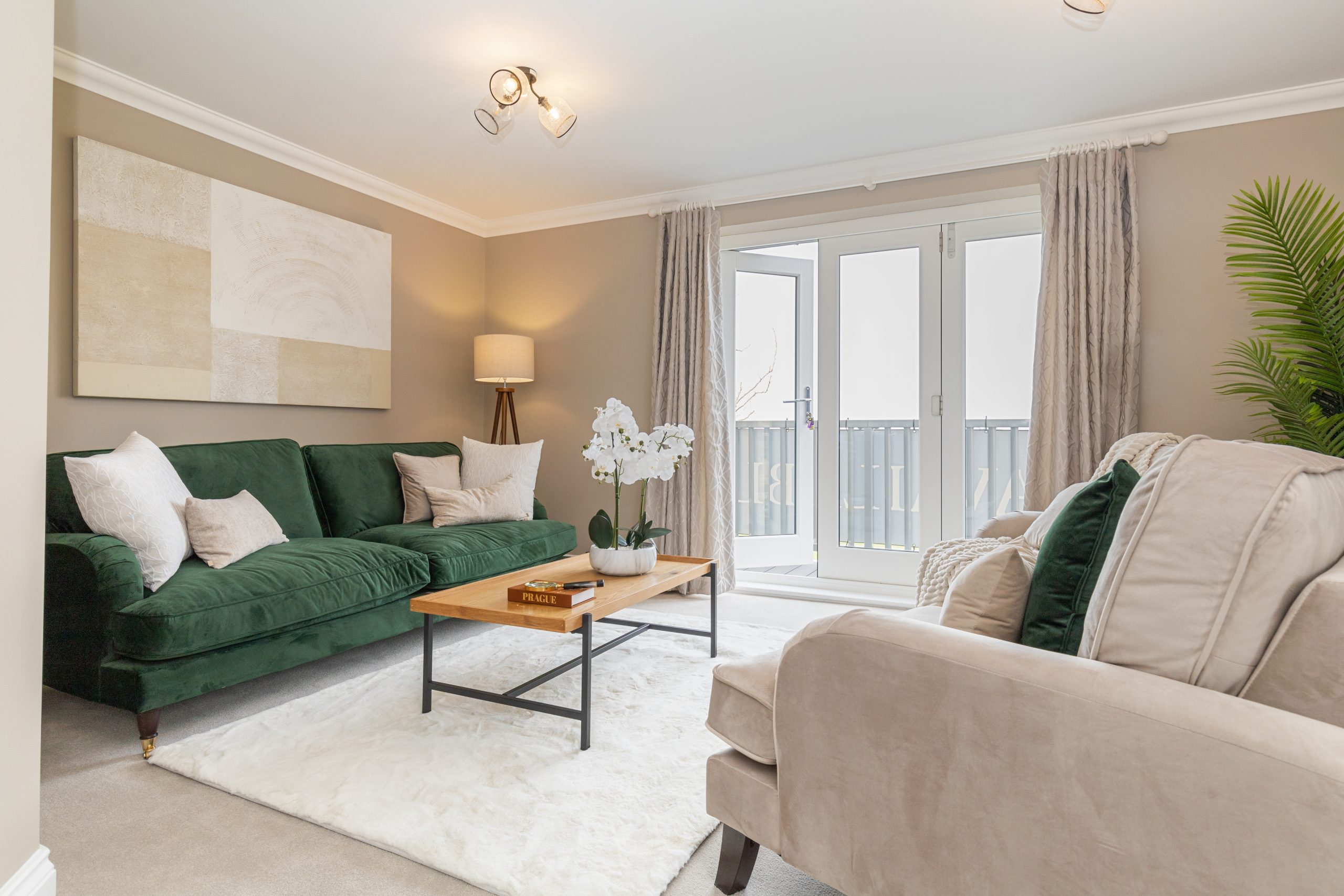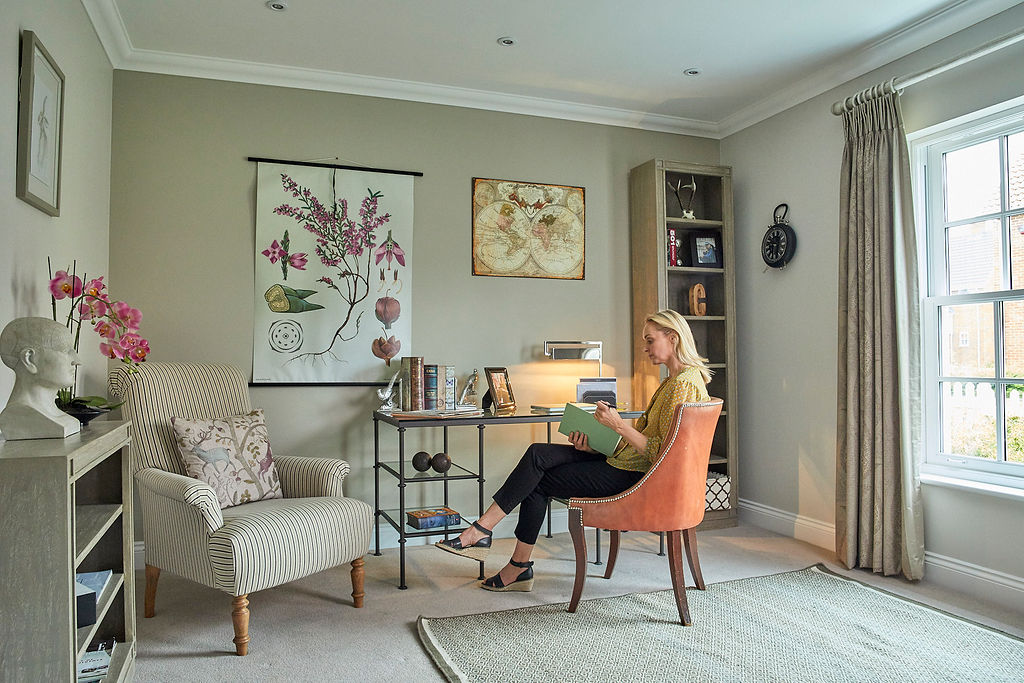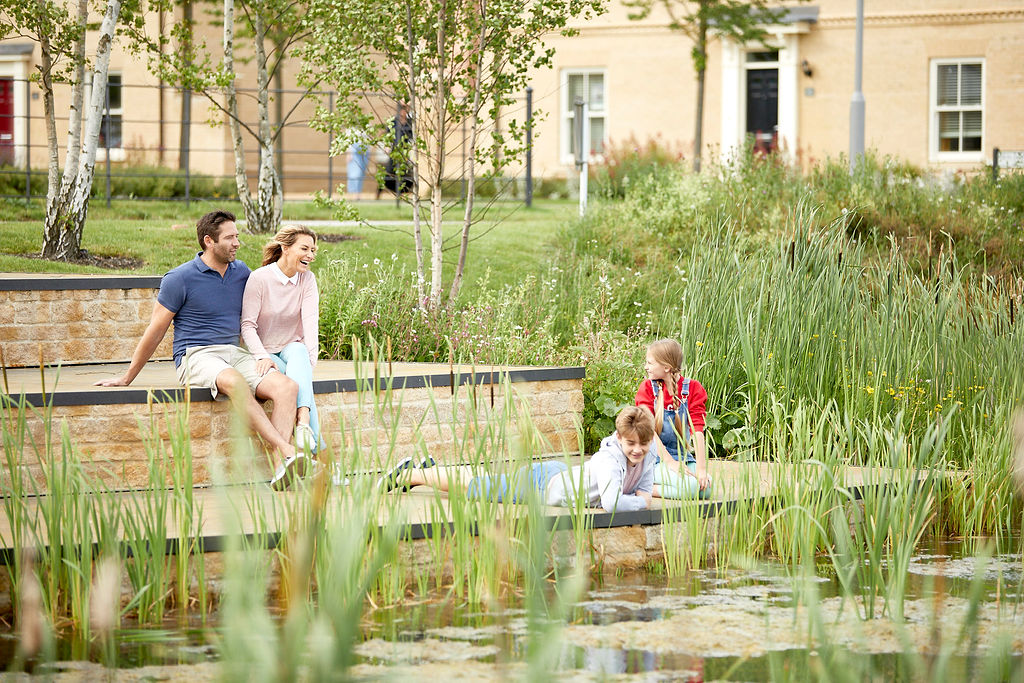Beat the Summer Heat: A Comprehensive Guide to Keeping Your Home Cool
Feeling the heat this summer? We’ve gathered together some actionable tips and straightforward strategies to help you keep your home cool when it’s warm outside.
Why Keeping Your Home Cool Matters
After being out in the hot sun, it’s lovely to come home to a cool, shady house… That’s the ideal, anyway.
Newly built homes are often better at staying cool in the summer months due to their modern insulation materials, energy-efficient windows, and advanced ventilation systems that minimise heat absorption and promote airflow.
But there is more that we can do. A cool home is not only more comfortable, it’s healthier too, and this is why it’s worth taking measures to prevent your house from overheating in the summer.
Health & Wellbeing
While sunshine can lift the spirits, heat can feel exhausting. Young, elderly and vulnerable people can be at risk from heat exhaustion and heat stroke, and working in hot temperatures can quickly become unbearable.
It’s harder to sleep on a stuffy night, and after a few days of this, feelings of tiredness and lethargy start to kick in. Even if your job is at a desk rather than a super-warm building site, productivity and concentration levels both plummet when the temperature goes up.

Understanding Heat Gain in Your Home
If you understand what’s making your home warm (and what’s preventing you from cooling it down), it’s much easier to keep it at a comfortable temperature.
Heat Sources: Sun & Beyond
Passive solar homes and photovoltaic panels are excellent ways of harnessing that sunlight for the greater good. However, the summer sun can also generate excess heat that makes your home uncomfortable to live in. Additional sources of heat, such as cooking, running electrical appliances and the body heat we generate ourselves can add to the discomfort. When we identify what’s making our homes too warm, we can start to manage it.
Key Strategies to Keep Your Home Cool
The British weather may be variable, but it’s still a safe bet that we’ll have at least some hot spells during the summer months. By planning ahead, we can work out which areas of our homes, lifestyles and behaviours we need to adapt if we’re to keep our cool when it’s hot.
Blocking Heat Gain at the Source
If you look at homes in hot countries, you’ll notice that many have smaller windows. This style of architecture doesn’t work in the UK, where we’re usually very glad for a spot of sunshine. However, it does mean that our lovely, light-filled rooms can feel too warm during a heatwave.
Window Treatments
The obvious solution is to use blinds and curtains, but that does mean that you’re shutting out light as well as heat. As an alternative, you can coat your south-facing or larger windows with a special film that reflects away excess heat. It won’t completely cut out heat, but it will reduce it.
Exterior Shading Solutions
Planting trees and large shrubs in your garden is a lovely, natural way to shade your windows from the outside. If you have French windows with a patio, think about installing a retractable awning: shade and shelter in the same neat package.
Smart Ventilation Techniques
Smart ventilation solutions aren’t just for offices and public buildings. A smart system adjusts the ventilation in your home based on temperature, occupancy and air flow. They draw information from weather forecasts and evaluate the air quality inside a building. These systems are increasingly used in the domestic market and can be retrofitted.
Sealing Air Leaks
Preventing draughts seems counter-intuitive; however, you can’t properly manage the temperature of a space if you can’t control it. Good insulation keeps your home cool as well as warm, and sealing air leaks will prevent hot air getting in as well as the winter chill. If you have a smart system, it will work more efficiently if there are no leaks.

Minimising Internal Heat Sources
It’s not just our radiators that create heat in the home! Here are a few tips to cut down on everyday excess heat.
Strategic Appliance Usage
Run heat-emitting appliances like washing machines and dishwashers early in the morning or after dark, and the same goes for tasks like baking, vacuuming and ironing. Hopefully, you’ll be able to dry your laundry outside or by an open window so you’ll be spared the heat from the dryer.
LED Lighting Benefits
Because LED lights use less energy than the old incandescent bulbs, they’re not wasting energy by producing excess heat. So, as well as being longer-lasting, more energy efficient and greener than their predecessors, LEDs are also a lot cooler.
Summer Cooking Hacks
In hot weather, we naturally go for salads over stews. However, on a really hot day, even grilling a chicken breast can feel exhausting. As the saying (almost) goes, if you can’t stand the heat, get into the garden. Embrace hot weather by using your barbecue more routinely. Indoors, keep your kitchen well ventilated, and use your air fryer rather than the oven. It still gets hot, but for less time.
Targeted Cooling Strategies for Different Areas
When you’re thinking about how to cool your home down in the summer, treat each part of the house as a separate area. What’s cool for kitchens won’t apply in, say, the home office.
Bedrooms for a Restful Sleep
Those summer nights aren’t necessarily something we all dream about. However, there are a few simple ways to cool down your bedroom at night.
Breathable Bedding Essentials
Choose pure cotton bedding (and pyjamas). Cotton fibres are naturally breathable and temperature regulating so will help you stay more comfortable at night. You can also buy cooling mattress toppers and pads. Some use natural materials like cotton and wool, while others employ tech like programmable airflow channels.
Shower Techniques for Lower Body Temperature
A tepid shower is a wonderful way to cool off, and use “cooling” scents like lavender and tea tree. Even though it’s tempting, don’t go for a completely cold shower as your body will rebel and try to hang onto heat.
Optimal Fan Placement for Airflow
Place your portable fan near a window so it’s drawing in fresh air, and putting a bowl of ice in front of the fan really works. If you have two fans, play about with their positioning so you create a pleasant airflow through the room. However, fans may not work as well during a heatwave, when they can turn into giant hair dryers.
Home Offices for Peak Productivity:
Our home offices are often in small rooms. How do we keep these cool on a hot day?
Workstation Positioning
Think about where your desk is. Is it under a skylight or close to a window? This is great for ventilation but not so good for glare. Blinds, fans and drinks of iced water are your friends.
Gadget Management
Tech generates a lot of heat. It’s a bit more effort but plug in only what you’re using at the time, with nothing on standby. Keep everything dusted to cut down on overheating risks.
Flexible Work Schedules
Be like our colleagues in continental Europe and introduce a siesta to your work schedule. If you can, work earlier in the mornings and in the evenings when it’s much cooler. It’s much easier to concentrate when you’re comfortable.

Long-Term Solutions for a Cooler Home
Many of the suggestions we’ve made for a cooler home don’t need a lot of planning or cost much money; however, if summers are getting warmer, it’s worth investing in long-term solutions.
If you’re moving into a new-build home or renovating a property, you can have lots of energy-efficient measures literally built-in. For example, our Zero Energy Bills homes at Church View, Bramford have features such as thermally efficient insulation for a constant temperature and PV panels that harness those rays.
Energy-Efficient Windows
Modern double and triple-glazed windows help to keep out the heat as well as the cold. On very hot days, we’re advised to keep the curtains pulled and the windows closed so we’re not drawing in hot air from outside. New, energy-efficient windows can really help.
Proper Insulation
Insulation may be known for keeping in the warmth in winter, but it can also prevent your home from overheating in hot weather. For example, a good layer of thermally efficient insulation in the loft protects the living spaces from the heat of the sun on the roof.
Smart Home Technology
Programmable thermostats and smart home technologies help to keep your energy bills down while keeping your home at a comfortable temperature. Intelligent technology learns how you like to live, cutting down on wasted energy.

Conclusion
If you can, a summer-ready home with thermal efficient insulation, new multi-glazed windows and smart controls is the gold standard for warm-weather comfort. However, there are plenty of easy changes you can make in any home, from switching to cotton bedding to closing the blinds during the day.
With a bit of thought and planning, you can make your home far more comfortable, whatever the weather.
Find your dream home with Hopkins Homes. Explore our new build developments to find the perfect space for you.
Feel free to get in touch with any questions, we’re always happy to help!